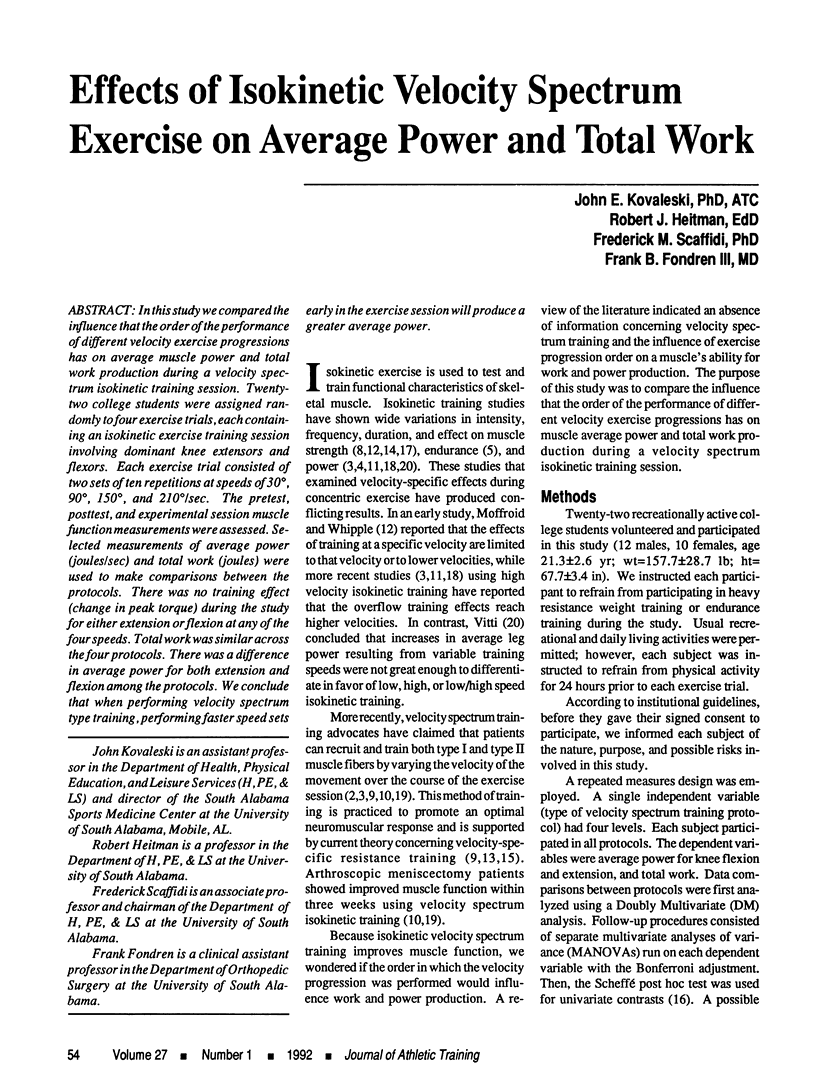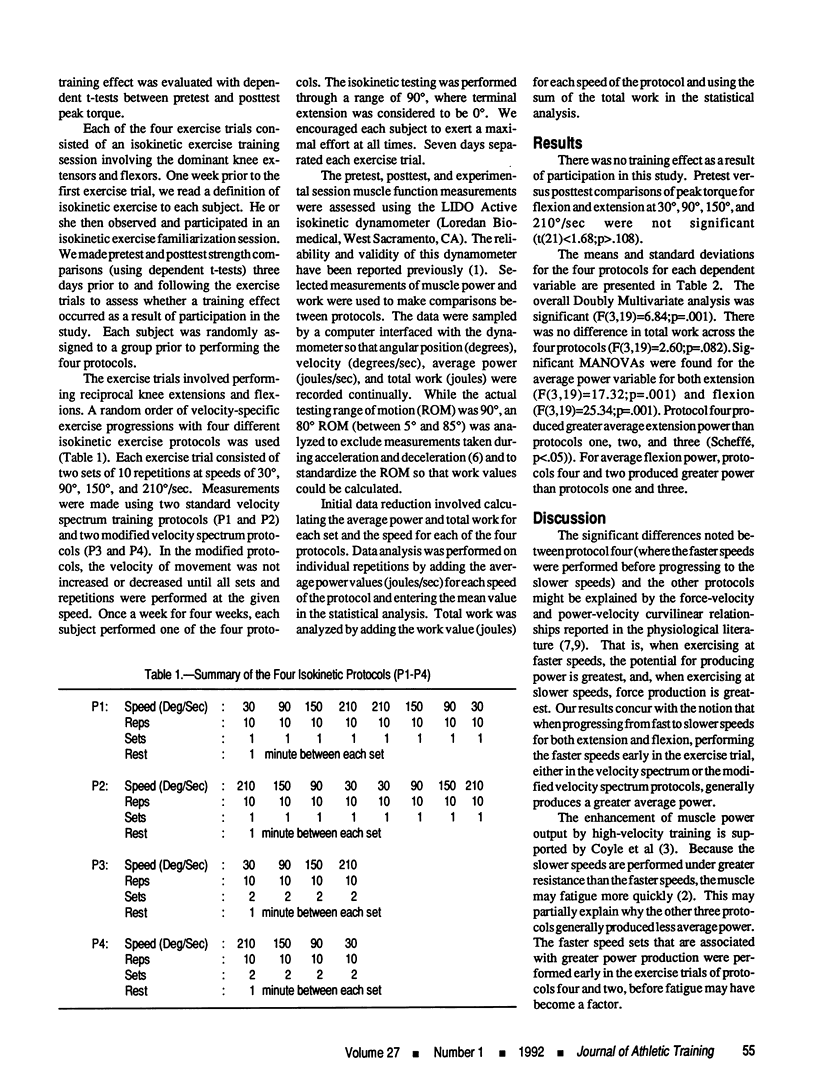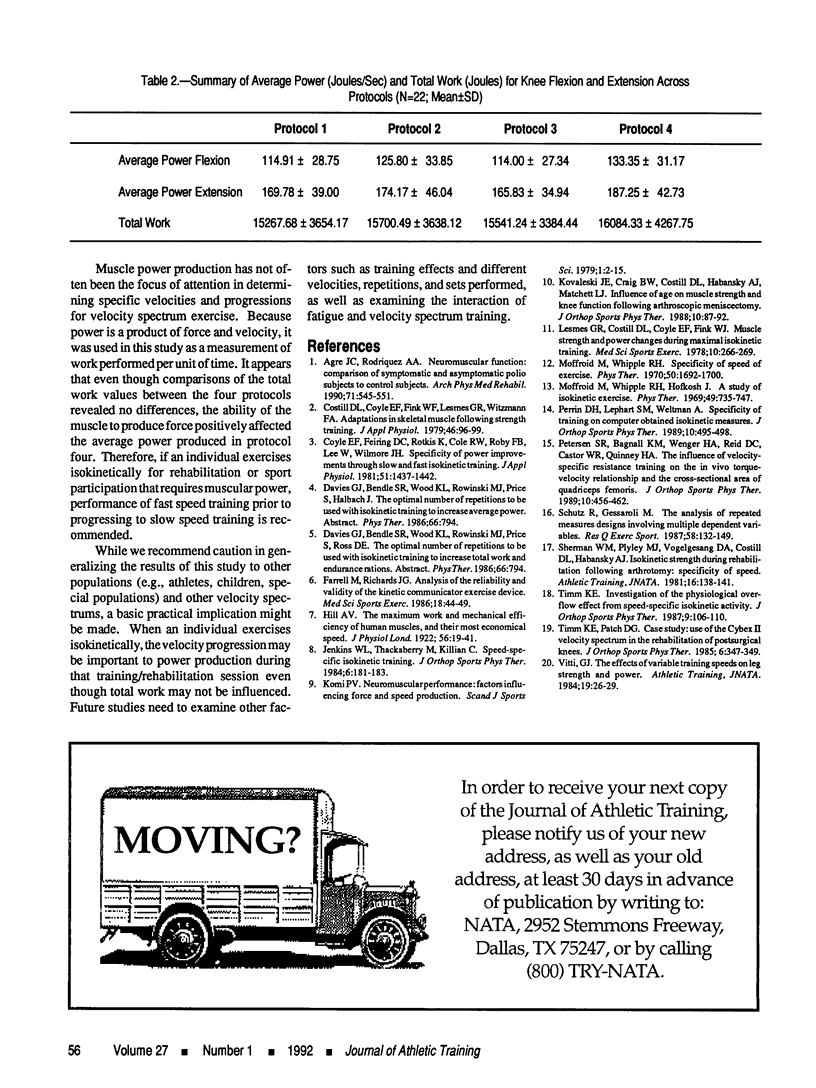Abstract
In this study we compared the influence that the order of the performance of different velocity exercise progressions has on average muscle power and total work production during a velocity spectrum isokinetic training session. Twenty-two college students were assigned randomly to four exercise trials, each containing an isokinetic exercise training session involving dominant knee extensors and flexors. Each exercise trial consisted of two sets of ten repetitions at speeds of 30°, 90°, 150°, and 210°/sec. The pretest, posttest, and experimental session muscle function measurements were assessed. Selected measurements of average power (joules/sec) and total work (joules) were used to make comparisons between the protocols. There was no training effect (change in peak torque) during the study for either extension or flexion at any of the four speeds. Total work was similar across the four protocols. There was a difference in average power for both extension and flexion among the protocols. We conclude that when performing velocity spectrum type training, performing faster speed sets early in the exercise session will produce a greater average power.
Full text
PDF


Selected References
These references are in PubMed. This may not be the complete list of references from this article.
- Agre J. C., Rodriquez A. A. Neuromuscular function: comparison of symptomatic and asymptomatic polio subjects to control subjects. Arch Phys Med Rehabil. 1990 Jul;71(8):545–551. [PubMed] [Google Scholar]
- Costill D. L., Coyle E. F., Fink W. F., Lesmes G. R., Witzmann F. A. Adaptations in skeletal muscle following strength training. J Appl Physiol Respir Environ Exerc Physiol. 1979 Jan;46(1):96–99. doi: 10.1152/jappl.1979.46.1.96. [DOI] [PubMed] [Google Scholar]
- Coyle E. F., Feiring D. C., Rotkis T. C., Cote R. W., 3rd, Roby F. B., Lee W., Wilmore J. H. Specificity of power improvements through slow and fast isokinetic training. J Appl Physiol Respir Environ Exerc Physiol. 1981 Dec;51(6):1437–1442. doi: 10.1152/jappl.1981.51.6.1437. [DOI] [PubMed] [Google Scholar]
- Farrell M., Richards J. G. Analysis of the reliability and validity of the kinetic communicator exercise device. Med Sci Sports Exerc. 1986 Feb;18(1):44–49. [PubMed] [Google Scholar]
- Hill A. V. The maximum work and mechanical efficiency of human muscles, and their most economical speed. J Physiol. 1922 Feb 14;56(1-2):19–41. doi: 10.1113/jphysiol.1922.sp001989. [DOI] [PMC free article] [PubMed] [Google Scholar]
- Lesmes G. R., Costill D. L., Coyle E. F., Fink W. J. Muscle strength and power changes during maximal isokinetic training. Med Sci Sports. 1978 Winter;10(4):266–269. [PubMed] [Google Scholar]
- Moffroid M. T., Whipple R. H. Specificity of speed of exercise. Phys Ther. 1970 Dec;50(12):1692–1700. doi: 10.1093/ptj/50.12.1692. [DOI] [PubMed] [Google Scholar]
- Moffroid M., Whipple R., Hofkosh J., Lowman E., Thistle H. A study of isokinetic exercise. Phys Ther. 1969 Jul;49(7):735–747. doi: 10.1093/ptj/49.7.735. [DOI] [PubMed] [Google Scholar]


